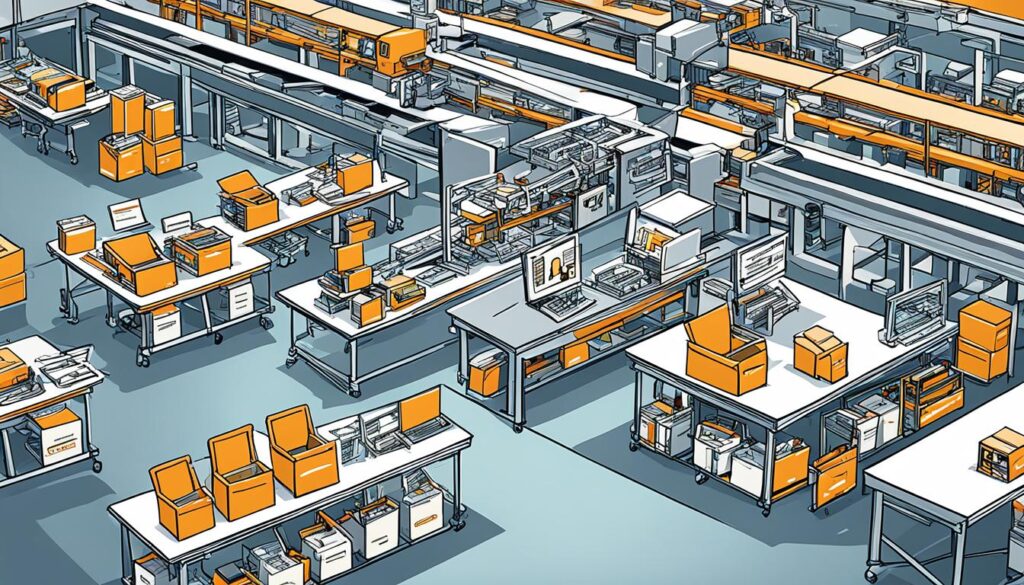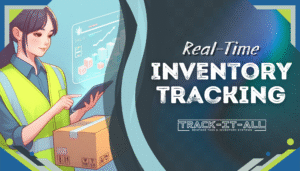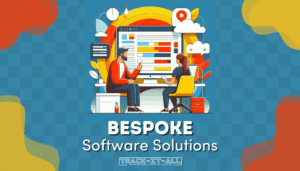The modern workspace in South Africa is undergoing a significant transformation, propelled by advancements in HR technology. Staffing solutions have become the cornerstone of how businesses attract, retain, and manage their employees. These digital advancements, particularly in staffing industry technology, have ushered in a new era for workforce management software, simplifying and optimizing the recruitment process to meet the expanding demands of industry dynamics.
Within this dynamic landscape, South Africa’s staffing industry technology is evolving to meet global standards, with a decisive pivot towards efficiency and strategic human resource management. Through cutting-edge staffing solutions, organizations are now able to integrate robust HR technology platforms that are tailored to augment the capabilities of HR professionals and enhance the overall recruitment experience.
Workforce management software not only streamlines intricate hiring protocols but also injects a level of precision and accuracy into talent acquisition that was once unattainable. This technological intervention has proven crucial in a market where the right talent can make a definitive impact on an organization’s success.
Key Takeaways
- HR technology is reshaping the recruitment process, making it more efficient and less resource-intensive.
- Staffing solutions in South Africa are aligning with global advancements to elevate workforce management.
- Workforce management software simplifies talent acquisition, saving time and money for businesses.
- South Africa’s staffing industry technology now allows for enhanced tracking and management of recruitment operations.
- Technological advancements in staffing have led to more strategic human resource management and improved job satisfaction.
Understanding Staffing Technology in the Modern Workplace
In an era of digital transformation, what is staffing technology and software has become a critical query for businesses aiming to streamline their recruitment processes. The integration of innovative recruitment software and robust talent acquisition software into the corporate ecosystem has revolutionized the way companies attract, hire, and retain employees. These advanced tools have been pivotal in evolving staffing methodologies, bringing forth a new age in human resource management tailored to the needs of modern organizations.
Evolution of Staffing Software
The workforce landscape has noticed a monumental leap from traditional hiring practices to the contemporary automated systems that buttress talent acquisition. By employing the latest in information technology, companies have been successful in expediting the entire recruitment lifecycle, reinforcing data-driven decision-making, and proactively managing workforce dynamics. Automation, paired with artificial intelligence, has endowed staffing solutions with the capacity to foster symbiotic interactions between human ingenuity and machine precision.
Key Components of Staffing Technology
At the core of today’s staffing technology and software are several integral elements that have collectively uplifted the efficiency and efficacy of recruitment strategies. Among these are:
- Applicant Tracking Systems (ATS) that streamline candidate sourcing, tracking, and onboarding.
- Comprehensive training modules designed to prepare new hires effectively.
- Retention strategies aimed at maintaining a vibrant and committed workforce.
- Direct communication tools facilitating immediate engagement between recruiters and job seekers.
These components work in unison to ensure that businesses not only attract quality candidates but also that their hiring process is cost-effective and able to adapt to other critical organizational demands.
| Component | Function | Benefit |
|---|---|---|
| Applicant Tracking Systems (ATS) | Automation of candidate sourcing and tracking | Enhanced recruitment efficiency |
| Training Modules | Structured onboarding and development | Quick and efficient employee integration |
| Retention Strategies | Employee satisfaction and engagement initiatives | Reduced turnover rates |
| Communication Tools | Instant messaging and updates | Improved recruiter-candidate interaction |
What is staffing technology and software?
At its core, staffing technology and software serve as the cornerstone of contemporary recruitment and workforce management in the staffing industry. By integrating functionalities like automation and applicant tracking, these digital platforms streamline and enhance the efficiency of hiring practices. Workforce management software, as part of this technology suite, enables businesses to optimize resource allocation and workforce scheduling to meet organizational demands effectively.

Furthermore, recruitment software plays a pivotal role in attracting, screening, and securing top talent, while reducing human error and expediting the recruitment lifecycle. As technology progresses, so do the capabilities of staffing applications, which now encompass sophisticated communication tools to keep potential employees engaged and informed throughout the hiring process.
Today’s staffing industry technology isn’t just about filling vacancies; it’s about creating an interconnected ecosystem that supports talent management and development, and drives strategic business growth. The expansion of these systems into the realm of managerial role development signifies their impact on organizational continuity and adaptability.
| Software Feature | Function | Impact on Staffing |
|---|---|---|
| Automated Scheduling | Automates shift planning and job assignments | Improves operational efficiency and workforce productivity |
| Applicant Tracking System (ATS) | Streamlines candidate search, filtering, and management | Fosters quick and quality recruitment |
| Communication Portals | Provides platforms for real-time interaction | Enhances candidate engagement and experience |
| Analytics and Reporting | Gives insights on hiring metrics and trends | Empowers data-driven decision making |
How Staffing Software Revolutionizes Recruitment
The landscape of recruitment is undergoing a dramatic transformation, primarily driven by advancements in staffing software and HR technology. In today’s competitive business environment, the need for a more streamlined, efficient approach to hiring is greater than ever, and this is where an applicant tracking system and sophisticated talent acquisition software step in.

Automating the Recruitment Process
Automation stands at the forefront of reshaping the recruitment process. Gone are the days of sifting through endless stacks of paper resumes or manually tracking applicants through different stages of hiring. Now, staffing software equipped with an applicant tracking system can perform tasks like prescreening candidates, scheduling interviews, and managing the recruitment pipeline with impressive precision. This shift not only elevates efficiency but also allows recruitment professionals to direct their efforts toward more impactful activities, such as engaging with candidates and cultivating a powerful employer brand.
Analytics and Decision Support in Staffing
In addition to automating mundane tasks, staffing software endows HR departments with sophisticated analytics tools. These platforms offer real-time data and predictive insights, enabling businesses to make informed decisions about talent acquisition strategies. Talent acquisition software not only provides valuable metrics on time-to-hire and cost-per-hire but also helps to pinpoint potential areas for improvement, ensuring continual optimization of the recruitment process. Ultimately, these innovations are not just improving business performance but also fostering a workforce adept at meeting the evolving challenges of the modern workplace.
The Role of an Applicant Tracking System in Talent Acquisition
In the competitive landscape of South Africa’s staffing industry, an Applicant Tracking System (ATS) functions as the linchpin of efficient talent acquisition. Employers rely on this component of staffing technology to navigate the complexities of recruitment, harnessing its power to manage volumes of applicant information with agility. From the initial job posting to the final decision of hiring, an ATS bolsters recruitment strategies, significantly enhancing the odds of securing top-tier talent.
Features and Functions of ATS
The architecture of a modern ATS is designed to support a wealth of features vital for recruiters. Central to this is resume parsing, which automatically interprets and organizes candidate information, thereby optimizing the screening process. Additionally, the staffing technology possesses the capability to rank applicants, ensuring those with the most pertinent qualifications rise to the top. Such tools embedded within the ATS not only elevate recruiter efficiency but also drive towards a more meritocratic selection process.
Comparing Top Applicant Tracking Systems
When assessing the top-tier ATS applications available to South African businesses, it’s eminent to recognize the differential benefits aligning with diverse operational needs. Leading talent acquisition software offers a spectrum of analytics and reporting features that empower HR managers with actionable insights. The recruitment software market provides an array of options, guaranteeing that each organizational requirement, from essential integration facilities to complex data analysis, can be satisfied by at least one advanced ATS solution. This variety ensures that every company, whether small-scale or a substantial enterprise, can find staffing technology tailored to streamline its unique hiring process.







